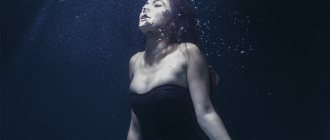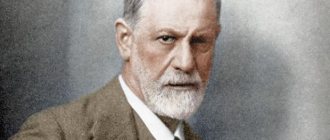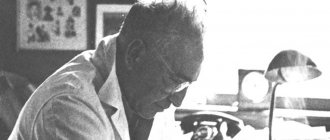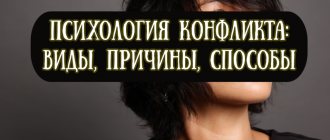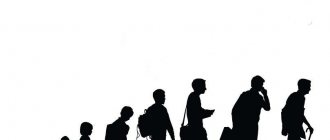Hello, my friend, you are interested in learning everything about creativity, then read to the end with inspiration. In order to better understand what creativity is and theories of creativity, I strongly recommend reading everything from the category Psychology of Creativity and Genius
creativity is a process of activity as a result of which qualitatively new objects and spiritual values are created or the result of the creation of an objectively new one. The main criterion that distinguishes creativity from manufacturing (production) is the uniqueness of its result. The result of creativity cannot be directly derived from the initial conditions. No one, except perhaps the author, can get exactly the same result if the same initial situation is created for him. Thus, in the creative process, the author invests in the material, in addition to labor, certain possibilities that are not reducible to labor operations or logical conclusion, and expresses in the final result some aspects of his personality. It is this fact that gives creative products additional value in comparison with manufactured products. In creativity, not only the result is valuable, but also the process itself.
An illustration of the irreducibility of the process and result of creativity to a logical conclusion from known provisions can be the words of Niels Bohr: “This theory is not crazy enough to be true.”
Creativity is a mental process of free realization of thoughts...
...in the external world, including with the help of tools and a person’s internal sensations, of interest to him or others and of aesthetic value.
A necessary element of human creative activity, expressed in constructing an image of the products of labor, and also ensuring the creation of a program of behavior in cases where the problem situation is characterized by uncertainty, is imagination.
Knowledge, skills and abilities belong to the area of the subconscious, that is, to psychological automatism, and are not decisive in the creative process. To be creative, you need to have basic knowledge, which is the general basis for mastering the instrument, as well as the necessary minimum knowledge sufficient to complete this creative process. But to accomplish it there is no need to have “encyclopedic” knowledge: as a rule, mastering such knowledge occurs, to a certain extent, due to the liberation of the mind (logic) from intuition; often this is the “copying” mind, which usually follows someone else's logic. At the same time, due to the loss of connection between the mind and intuition, the implementation of the creative process one way or another becomes impossible. A free mind (or logic), for example, is fast, sophisticated, resourceful, inventive and daring. Therefore, you can have infinitely great knowledge, but not be able to create anything new if intuition does not work. On the other hand, you can have highly developed intuition, but still not be able to create something new, if there is no knowledge or tool with the help of which you need to realize intuitively perceived images, formalize them in the language of logic and make them accessible to other people. People also say: “I know and am aware.” Vedat means “to manage, to manage knowledge.” It is important to understand that a person who only knows, but does not know, will not be able to create something new. Creativity requires a harmonious combination of knowledge and skill, as well as logic and intuition.
The branch of knowledge that studies creativity is heuristics. Valuable creativity Spring creativity
Psychology of creativity: the essence of science, the subject of study
Psychologists study the products of human activity created in the fields of science, technology, and art. In addition to the products themselves, psychologists are also interested in the components of the creation process: the role of thinking, imagination, intuition, and individual personality traits.
Within the framework of psychology, the personalities of great creators are examined: they study the biography, background, and role of giftedness. According to psychologists, all people have creative abilities and they can be developed. But it is important to distinguish giftedness from genius - the highest form of manifestation of creative activity. Genius is considered a rare innate quality, which is why there are few geniuses.
Notes
- ↑ Meshcheryakov B. G., Zinchenko V. P. Large psychological dictionary. 2003
- ↑ (inaccessible link). Retrieved May 12, 2021.
- Jung K. G. Psychology and literature. In the book: Jung K. G., Neumann E. Psychoanalysis and art. Per. from English -M.: REFL-book, K. Wakler, 1996. −304 p. Page 30-54.
- Minyushev F.I.
Sociology of culture. Tutorial. Moscow, 2003. - ↑ Ponomarev Ya. A.
Prospects for the development of the psychology of creativity - ↑ Ilyin E. P.
Psychology of creativity, creativity, giftedness - ↑ Psychology and pedagogy of creativity and training in research activities: pedagogical innovation: monograph / F. V. Sharipov. - M.: University Book, 2015. - 584 p.
- Neumann E. Art and time. In the book: Jung K. G., Neumann E. Psychoanalysis and art. Per. from English -M.: REFL-book, K.: Wakler, 1996. −304 p. pp.153-193.
- Neumann E. Creative person and transformation. In the book: Jung K. G., Neumann E. Psychoanalysis and art. Per. from English -M.: REFL-book, K.: Wakler, 1996. −304 p. Pages 206-249.
- ↑ Creativity: theory, diagnostics, technology. Dictionary reference book / Under general. Ed. T. A. Barysheva. - St. Petersburg: Publishing house. VVM, 2014.— 380 p.
- Ponomarev Ya. A. Psychology of creativity, 1976.
- ↑ Galkina T.V., Zhuravlev A.L.
The role of Ya. A. Ponomarev’s theory in the development of the humanities // Science. Culture. Society. - 2015. - No. 3. - P. 5-11. - Matyushkin A. M. Thinking, learning, creativity. - M.: Publishing house MSSI, 2013.
- Galin A. L. Psychological features of creative behavior, 2001.
History of the development of the industry: the formation of science, role in society
As a science, the psychology of art was formed at the beginning of the 20th century. It had not yet been defined as a separate field, since it considered only one area: biography, literary works. By analyzing the material, scientists studied the nature of the creation process and personality traits.
With the beginning of the development of experimental psychology, research methods have changed. Psychologists began to work not only with heritage, but also with contemporary authors. They used questionnaires, experimental methods, and interviews.
The scientific and technological revolution influenced the quality of the study of art and posed new challenges for psychologists. The need for employees who are able not only to complete a task, but also to offer creative ideas, take on more responsibility, and make independent decisions has increased. In this regard, a new direction has emerged that studies creativity as a component of science and technology.
See also
- the meaning of creativity,
- creativity is a central element of human existence,
- types of creativity,
- need for creativity,
- assisted creativity, use of assistive systems for creativity,
- development of children's creativity, stages of development of visual creativity,
- creativity as a phenomenon,
- Imagination
- A game
- Invention
- Innovation
- Art
- Creativity
- Thinking (psychology)
- Flow (psychology)
- Psychology of creativity
- Craft
- Sublimation (psychology)
Do you like creativity? or do you have any useful tips and additions? Write to other readers below. I hope that now you understand what creativity is, the theories of creativity and why all this is needed, and if you don’t understand, or if you have any comments, then don’t hesitate to write or ask in the comments, I will be happy to answer. In order to gain a deeper understanding, I strongly recommend studying all the information from the category Psychology of Creativity and Genius
The role of creativity in antiquity, the opinion of philosophers
Antiquity is the first period in human history marked by the accelerated development of science. Considering various manifestations of the surrounding world, philosophers have identified creativity as a separate sphere. They divided it into human and divine. Human manifestation included arts and crafts. The phenomenon of the creation of the cosmos was considered a divine manifestation.
Aristotle denied God's intervention in the creative process, calling it an act of activity - the creation of something new. Plato viewed creation as a process of contemplation—the new is born from observation.
And
In addition, there are lesser-known approaches to activating and developing creativity:
- Focal object method by Charles Whiting. This method is aimed at finding new ideas by attaching properties or characteristics of other objects to the initial object. It is used in invention when searching for new modifications of existing objects.
- Fritz Zwicky's morphological analysis is based on the selection of possible solutions for individual parts of the problem (the so-called morphological features characterizing the device) and the subsequent systematic receipt of their combinations. In other words, this method consists in dividing the object under study into elements, from which elements with the desired characteristics are selected. And a new element is assembled only with the selected characteristics.
- The Bus, Bed, Bath method. It is based on the belief that new ideas often come to us at the most unexpected moments and in the most unexpected environments. You just need to release them and not interfere with their appearance.
- Idea trap (or personal brainstorming). This method suggests writing down absolutely every idea that comes to your mind. The process can be carried out for a whole week, after which it is necessary to analyze the ideas received and try to choose the most suitable option.
Theories of creativity: different approaches, concepts of perception
The phenomenon of creativity was examined by psychologists from different schools. Among them are:
- Depth psychology. Freud considered two aspects: unconscious components and motivation. Creativity is the sublimation of sexual energy, which an individual realizes in a socially acceptable manner. Jung viewed it as the result of the influence of archetypes - manifestations of collective images. Creativity for analytical psychology is a means of expressing deep experiences, unity with the collective unconscious.
- Gestalt psychology. Gestalt psychology is characterized by considering art as a product of the thinking of a developed personality.
- Cognitive theory. According to cognitive scientists, creativity is the essence of the life process. Each individual uses accumulated experience throughout his life to create his own worldview model.
- Humanistic theory. For humanists, creativity is an act of self-expression. The ability to create distinguishes a meaningful personality from animals and is innate.
- Development of a creative personality. Altushler viewed the creation process as a consequence of self-improvement. To develop creative abilities, a person needs not only innate data, but also suitable conditions.
Modern science combines different approaches, studying the process of art development comprehensively.
Collective creativity
Theories that describe the principles and features of collective creativity can be included in a separate group:
Brainstorm. The author of this method is Alex Osborne. A group of people actively proposes various ideas, group members try to develop them, immediately analyze them, identifying disadvantages and advantages.
Delphi method (Delphi method). The method consists in identifying the expert opinion of specialists under conditions of anonymity, followed by processing the results obtained using statistical methods.
William Gordon's synectics consists of uniting individual creators into a single group to jointly formulate and solve specific problems. The purpose of developing the method is to increase the likelihood of success when setting and solving problems. The method includes practical approaches to conscious decisions and the use of unconscious mechanisms that manifest themselves in a person at the moment of creative activity.
Whatever approach or theory of creativity you choose, remember that creativity is strongly related to your inner desire to create, as well as a well-rounded education. Therefore, read more interesting books, watch good films, go to exhibitions and galleries, and most importantly, analyze and comprehend new knowledge.
Ponomarev's concept: nature, features of the creative process
Ya. Ponomarev considered the process of creating art as the result of life experience. He distinguished between logical and intuitive experience:
- The part of experience responsible for creativity is in the hidden part of consciousness; in order to gain access to it, you need to choose an approach.
- The key to unlocking experience is action. Intuitive execution of actions leads to the desired experience.
- The formation of intuitive experience does not require the participation of consciousness.
In the structure of creativity, Ponomarev identifies three approaches:
- self-expression;
- socially useful creation;
- the solution of the problem.
Ponomarev's concept considers creativity as the result of the interaction of a subject and an object or a subject and another subject.
Test your knowledge
If you want to test your knowledge on the topic of this lesson, you can take a short test consisting of several questions. For each question, only 1 option can be correct. After you select one of the options, the system automatically moves on to the next question. The points you receive are affected by the correctness of your answers and the time spent on completion. Please note that the questions are different each time and the options are mixed.
Statistics Full screen
Evgeny Buyanov
← Development of creativity Theory exam →
Concept, stages of the creation process: development of the creator’s thoughts
The definition of the term “creativity” is an activity as a result of which an individual translates inspired images into reality. Products of activity: scientific discoveries, books, films, any works of art.
There are 4 stages in the process of creating an object of art:
- Preparation;
- thinking about an idea;
- development of an action plan;
- final design.
The creative process belongs only to the creator, and its products belong to the culture.
Difficulties in perceiving various types of creativity: problems of the psychology of art
The main problems of the psychology of art are determined by the relationship between subject and object:
- the study of personality occurs through consideration and perception of aesthetic values;
- artistic perception of art changes depending on the level of development of the individual’s personality;
- art influences the behavior and motivation of an individual, changing his worldview.
The specifics of the problem depend on the types of creativity in psychology. In psychology, there are separate forms of manifestation of creative activity:
- scientific - discovery of real world phenomena in order to obtain knowledge;
- artistic - mastering the surrounding world through aesthetic rethinking, the desire to create;
- technical - transformation of reality using imaginative thinking, development of structures and mechanisms;
- co-creation - interpretation of the results of art, joint work of the creator and the viewer;
- pedagogical - searching for new methods and forms of presenting material in order to improve the learning process;
- The nursery is a necessary condition for the child’s thought process, which manifests itself in play and other activities.
Studying the problems of art helps to simplify the understanding of the creative process and make it more accessible to science and people.
Metaphysical-topological dimensions of creativity
Understanding the phenomenon and the internal nature of creativity requires the utmost opening up of semantic contexts, a radical expansion of the methodological framework for its study, and finding reliable explanatory principles based on universal structures and laws of the existence of the world. Empirical studies of creative activity must be accompanied by the discovery of the fundamental foundations and super-experienced principles of reality, which determine the necessary conditions, origins and the very possibility of the existence of creativity and the creative potentials of the individual. In the broadest sense, creativity is defined as the way of existence of some absolute, original and unconditional primary essence, which is constituted and manifested with the help of original universals: freedom, possibility, whole and interaction. These universals are empty, invisible and immeasurable. They draw coordinating semantic frameworks and represent universal, qualitatively unique “places,” some independent, “pulling” spaces that exist according to the laws of a self-awakening vacuum. At the same time, their architectonics can be manifested and seen by constructing their generalized topological model or “Entity Map”. The productivity and heuristic power of the universal “entity map” lies in highlighting empty spaces and predicting possible, not yet sufficiently declared, but nevertheless, equivalent entities and entire areas of living reality behind them and, therefore, in highlighting possible trends and trajectories of development . Given the existence of numerous and different-sized topological models, maximum completeness and simplicity of generalization of the phenomena of reality is achieved using the method of system description by V.A. Hansen (1984), in which a certain organizing Pentabasis, consisting of four adjacent and one unifying concepts, is selected as the initial organizing matrix. Thus, when revealing the highest, universal “matrix of essences” of creativity, it is advisable to present its fundamental dimensions in the form of a Pentabasis, consisting of two interconnected pairs of primary essences: “Interaction - Whole” (Being) and “Possibility - Freedom” (Nothing), which are united and mutually agreed upon and are balanced by the ultimate essence of the Absolute. Moreover, each phenomenon and variable of manifested creative reality must necessarily undergo a procedure of localization, chronologization and correlation with the central primordial essence and its fundamental dimensions. In an extremely broad, metaphysical-topological sense, creativity is understood as a way of existence and manifestation of the Absolute, which unfolds through the manifestation of its universal dimensions - freedom, possibility, wholeness and interaction. This highest transcendental flow at the personological level manifests itself as Creative Vision, is experienced as an internal, deeply intimate reality and is objectified in the phenomenal worlds in the form of material and spiritual values.
Table 1. Essential dimensions and universal manifestations of creativity
| WHOLE Creativity as the creation and implementation of the whole Creative thinking | OPPORTUNITY Creativity as the creation and implementation of possibilities Creative imagination | |
| BEING | ABSOLUTE Deployment of the Absolute and creativity of nature Creative perception and meaning formation | NOTHING |
| INTERACTION Creativity as interactionCreative memory | FREEDOM Creativity as the realization of freedom Creative intuition |
Paintings by artists used in the table: Salvador Dalí, Tomek Sętowski, Jamile Baldridge, Greg Spalenka
Signs of a creative personality: how to develop innate talents
Creative people differ from others in their worldview and approach to everyday affairs. They can be distinguished by the following characteristics:
- developed imagination;
- thirst for activity;
- constant emergence of new ideas.
To develop innate abilities, you need to overcome internal doubts. As a child, every child engages in art for his own pleasure. He does not think about the result, enjoying the positive experiences that arise during the activity. Growing up, an individual faces criticism of the results of creativity. If he has low self-esteem, he withdraws into himself and stops trying to create.
You can get rid of external pressure by refusing to evaluate your activities through the eyes of other people. Exercises to develop creativity will help awaken creative energy: anti-stress coloring books, modeling, finger painting.
TRIZ – Theory of inventive problem solving
TRIZ (the theory of solving inventive problems) is a domestic theory that studies the mechanisms of development of technical systems with the aim of creating practical methods for solving inventive problems. Work on TRIZ was started by Heinrich Altshuller and his colleagues in 1946, and by now the concept has developed to a serious scale. TRIZ is based on a scientific approach to invention, the use of special algorithms to find solutions, and the improvement of creative teams. However, TRIZ cannot be called a mature scientific discipline due to the lack of a unified structure.
You can learn more about TRIZ in a special training.
In what situations does creativity negatively affect a person?
When bringing ideas to life, a creator may encounter problems caused by the desire to do everything perfectly. The imagination creates a picture that he wants to realize, but the level of skill development or technical data does not allow this to be done. The result is unsatisfactory. If this happens constantly, a person becomes disappointed in his abilities and may completely abandon art.
The psychological impact of the torment of creation can greatly harm the individual, cause depression, and the development of destructive habits: alcoholism, drug addiction, and other types of addiction. But overcoming the crisis also has an equally strong impact. Coming out of a depressed state, he experiences an inner uplift, his view of the world changes. The highest form of unity between art and the creator—catharsis—can completely change an individual’s life and his views.
SCAMPER
SCAMPER is a creativity technique that offers a list of changes that can be made when working on a specific object. The technique was developed by Bob Eberle in 1997, and in fact, this technique is a modification of the principles described in one of the previous lessons. The technique is to consistently answer questions about modifications of the given task. The use of the SCAMPER technique involves the following modifications:
- Substitute - Replace something
, for example, components, materials, people - Combine - Combine
, for example, with other functions, devices - Adapt - Add something
, for example, new elements, functions - Modify - To modify
, for example, change size, shape, color or other attribute - Put - Apply for something else
, in another industry - Eliminate - Remove parts
, simplify to the main thing - Reverse - Swap
, turn over, find a use for something opposite
The problem of creative crisis: how to overcome fear and laziness
A creative crisis occurs when an individual loses interest in creating. He may come up with new ideas, but constantly postpone implementation. The fear of failure is paralyzing, so a person decides that it is better to do nothing than to make a weak, uninteresting product. You can get out of this state by reconsidering your attitude towards art.
The main goal of the process of implementing an idea is to have fun.
Practicing art is influenced by the general mood: if an individual is depressed or going through a difficult life situation, it is difficult for him to tune in to productive activity. Internal negativity should be channeled into a creative direction, getting rid of the influence of external and internal problems. Distraction from the world and focus on the process helps to overcome the stupor that arises as a reaction to external pressure.
Ontological and universally creative nature of the psyche
The psyche or mental organization of a person is ontological in nature (A. Vallon, S.L. Rubinstein) and at the same time it is subordinate to the cosmic creative principle and is identical to the source of creation (S. Grof). Psychic reality, as the original integrity, is not determined by biological, sociological, personal and even cultural determinants, but includes them as higher, already manifested and mastered levels. The psyche, as reality and at the same time a reflection of reality, is holographically built into the Universe, and as a continuous, self-developing “image of the world” (A.N. Leontyev) is woven into the process of evolution. At the same time, it is a living microcosm and is subject to the most general and universal principles and laws of the functioning and development of the world as a whole. The universal structure of the psyche naturally includes the entire spectrum of manifestations of consciousness and contains unconscious and transpersonal states, as well as its pre-subject and meta-subject stages of development. In addition, the psyche is of an original, universally creative nature, its productive functioning represents the construction of a dynamic image of the world, and its essential mechanisms are isomorphic to the mechanisms of creativity (V.T. Kudryavtsev). Thus, the original “Map of Entities”, the main dimensions of which are the dialectical connections “interaction-whole”, “freedom-possibility” and the absolute , create organizing and explanatory spaces both for philosophical theories of creativity and for those based on research and an explanation of such basic mental processes as: “memory - thinking”, “intuition - imagination” and the perception that underlies them .
Personological dimension of creativity
A special task is to introduce the subject into the map of entities, identifying the relationship between a person and each of the entities. A person gives them meaning, value content, and correlates them with the entire spectrum of needs of the sphere. Entities can only exist through humans. Without a person, there are no entities, just as without the human ear, not only music, but also the sounds themselves, created from “raw” waves and vibrations, do not exist in the world. The organic inclusion of a person in the map of universal essences occurs through creativity, which, as a way of existence of the Absolute, is the original essence, as well as the highest form of manifestation of human life. Creativity manifests itself as an independent, active, unconditional primary essence, which defines itself, with which reality correlates and which itself gives justification to the phenomenal world. “The actual content of reality,” wrote L.M. Lopatin, “should be explained by its correspondence with the supreme ideal that absolute creative activity carries out in its creations.” Creativity itself does not need to be attributed to the original, to any more fundamental essence or universal value. It itself is at the beginning and in the center of the world and is the causa finalis, the source of all things and the highest point of correlation. Creativity supports the Universe, is the axis around which invisible universals, as well as phenomenal and possible worlds, revolve. The primacy and originality of creativity was always emphasized by N. Berdyaev: “Creative experience is not something secondary and therefore requiring justification - creative experience is something primary and therefore justifying.” With this formulation of the problem, the question of the fundamental conditions of creativity loses its meaning, since creativity acquires metaphysical unconditionality, ontological primacy and existential self-sufficiency. The conditions of creativity unfold from within, and the external and internal repeatedly include each other, subject to a special recursive causality. This type of causality is created in the flow of activity of a unique creative personality. “Causality understood from the inside,” wrote L.M. Lopatin, is a creative act of a living being. The cause creates, the effect creates. Cause is creative energy and proposes a being who has this energy. Causality is impossible without the creator, the creative.” Creativity as a primary essence appears in the form of a Platonic idea, about which A. Whitehead wrote: “It has the creative power to create conditions for its own implementation.” The unified concept of creativity is based on the idea of the universal nature of creative activity, on the understanding of creativity as a free, continuous self-creation of the Absolute and the planetary process of Evolution, on its experience as joint self-expression, co-vision and co-creation with absolute creative power and deep-internal, spontaneous realization of invariant evolutionary principles and universal creative mechanisms (S. Markov) [1].
Psychological theories of creativity
Mel Rhodes (1961) in the article “Analysis of Creativity” (1961), having analyzed 40 definitions of creativity and 16 definitions of imagination, developed and substantiated a holistic model of creativity - 4 Ps , presenting it in the form of the interaction of 4 factors: process, product, personality, and environment (process, product, person, press). In turn, Ross Mooney (1962), in his work “A Conceptual Model for the Integration of Four Approaches to Determining Creative Talent,” also proposed viewing creativity through the prism of the 4 Ps (process, product, person, environment). Stuart E. Golann (1963) replaced the concept of environment with the closely related concept of “place” and his theory of the 4Ps (process, product, person, place) became the structural basis for organizing the study of creativity. At the same time, “place” was understood as a problematic or socially organized environment. Later, D. Simonton (1988), identifying the concepts of leadership and creative activity, expanded the list of organizing categories and introduced the fifth concept P - persuasion (persuasion). In turn, Klaus Urban (2003) adds a new one to the three classic dimensions – process, product and person – problem, leaving the category of environment. At the same time, he develops a new formula for creativity: 4Ps-E. These theories were built on the basis of a generalization of empirical experience, in strict accordance with scientific criteria and the principles of evidence and rationality. At the same time, there is another reflexive way of studying creativity, which consists in the initial construction of its conceptual constructs and topological models, which set broader contexts and plans for understanding and highlight facts and phenomena that are inaccessible to direct observation and empirical research. These initial explanatory constructs are chosen arbitrarily, intuitively, by grasping deep archetypes and universal structures of reality. As such an initial semantic context, one can choose the life world of the individual, or rather the set of phenomenological worlds in which a person’s free self-realization and his creative dialogue with the world take place. The maximum possible completeness of the description of existing and possible empirical experience is achieved by introducing it into the configuration of the contexts of phenomenological worlds, by constructing some topological construct - a pentabasis, uniting the objective and symbolic, internal and social worlds, as well as culture as the center of their integration. This pentabasis has powerful explanatory and heuristic potential and surprisingly incorporates the core dimensions or domains of creativity (process, product, person, and environment) derived empirically. At the same time, in an extremely broad sense, creativity is presented as a holistic, continuous stream of creative vision structured by universal laws and structures, projected into basic, phenomenal worlds and manifesting itself with the help of elements, structures and basic patterns of these worlds. Creative vision is a self-sufficient form of activity that harmoniously includes and integrates all other forms of creativity. So in the objective world it manifests itself as productive creative activity , in the symbolic world as creative problem solving, in the social world as creative dialogue and in the internal world as creative self-realization. The highest form of creativity, determined by the laws of the cultural world, manifests itself as a creative vision, co-creation with the world, creative semantic adaptation, harmonization with the meanings of the Universe, as well as meaning-making, as the process of drawing out and endowing reality with developing, creative meanings. Semantic structures are the highest, nuclear, integrative-transcendent formations of the personality, and the meaning itself is equivalent to the existence of the personality in the world and life itself. “Some called him the fourth,” wrote V.P. Zinchenko, some - the fifth dimension of existence. Although he should be named first.” Meaning-making and understanding of reality are the central dynamic components of the highest form of creativity - creative vision, including creative activity (product), problem solving (process), self-realization (person) and creative dialogue (place). In this regard, to reveal the deep essence of creativity, it is advisable to introduce a fifth element, some central dimension - sense, meaning, and present the classical model in the form of 4Ps / S - process, product, person. , environment (place), meaning (sense) [2; 3].
Creativity is rooted in culture, human practice, the social world, textual reality, and unique existential experience. Creativity is not only and not so much a process, ability, product or specially organized environment, but rather a universal principle, a multidimensional dynamic space, a self-sufficient generative primary essence, manifesting itself in phenomenal worlds in the form of effective problem solving, free self-realization, productive activity and creative dialogue.
Table 2. Forms of manifestation of creativity in phenomenal worlds
| Symbolic World Creative Problem Solving Process | Social world Creative dialogue Environment (Place) | |
| Culture Creative vision and meaning-making Sense | ||
| Subject world Creative activity Product | Inner world Creative self-realization Personality (Person) | |
| The table uses the works of M. Escher, I. Repin, V.P. Ivanov | ||
1. Markov, S. L. (1997) Mechanisms of Creative Dialogue With the World. Paper presented at the 105th annual meeting of the American Psychological Association, August 17, 1997. Chicago, IL. 2. Markov S.L. A quintological approach to a unified theory of creativity / S.L. Markov // Pravnichy newsletter of the University “KROK” – 2012. -Vip.11.– P.160 -171. 3. Markov S.L. Forming a creative container of particularity as a universal method of activating creativity. Current problems in psychology - Volume 1: Organizational psychology. Economic psychology. Social psychology: scientific research /ed. S.D. Maksimenka, L.M. Karamushki. – K: View “A.S.K.”, 2011. – Vip.32.- P.374-380.
Topic navigationNext entry >>
(Visited 3,119 times, 1 visits today)
The purpose of creativity: the benefits of art for the individual and society
Art classes are useful for people, regardless of age and field of work. Creative execution of routine daily work helps to avoid a crisis. A person is constantly developing, his thinking works faster than that of other people. Art affects health by increasing the body's ability to withstand stress.
In a global sense, art is a way of transforming the world, changing the destinies of peoples and countries. With the help of books, paintings, films, millions of people change their opinions about important phenomena. In many ways, significant changes in society occur under the influence of artists. Thus, the speech of M. L. King became the reason for the overthrow of racism in America, the books of V. Lenin created the basis for the revolution in Russia, the ideas of Isaac Newton and Leonardo da Vinci changed the world of science and art.
Edward de Bono's Six Hats Method
In this theory, the famous lateral thinking specialist Edward de Bono shows his original approach to improving the thought process. The method of six thinking hats is based on the fact that we can think in 6 different ways, and in order to distinguish between these ways, 6 hats of different colors were invented as an association for better assimilation of the material. In a white hat, a person focuses on numbers and facts, in a black hat, he is skeptical, in a yellow hat, he analyzes positive experiences, in a green hat, he creates new ideas, in a red hat, he shows emotions, and in a blue hat, he sums up the results.
Continuing the analogy, de Bono develops the theory of six thinking hats in such a way that these hats can be put on, changed, taken off, etc. As a result, this author’s technique helps make the theory easy to understand even for the youngest readers. Therefore, the 6 hats technique is often used in lessons and trainings to develop intelligence and creativity. Read more about the six hats technique and the book in which it is described on this page...
